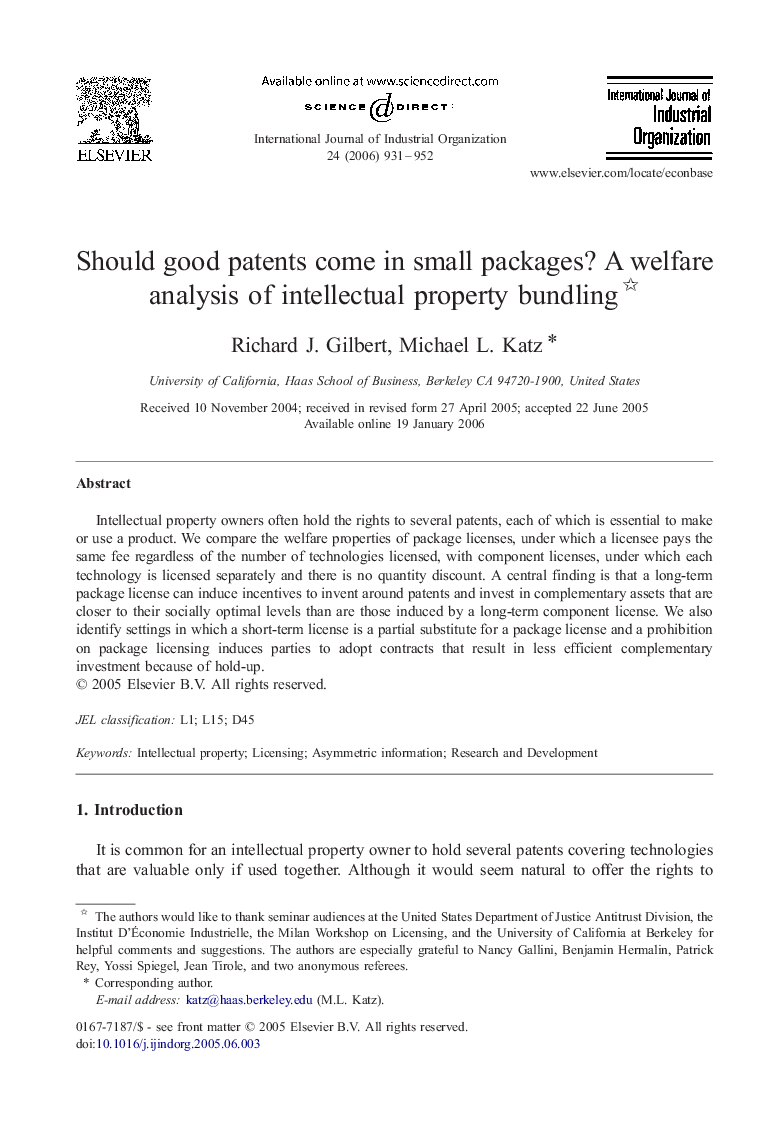| Article ID | Journal | Published Year | Pages | File Type |
|---|---|---|---|---|
| 5078706 | International Journal of Industrial Organization | 2006 | 22 Pages |
Abstract
Intellectual property owners often hold the rights to several patents, each of which is essential to make or use a product. We compare the welfare properties of package licenses, under which a licensee pays the same fee regardless of the number of technologies licensed, with component licenses, under which each technology is licensed separately and there is no quantity discount. A central finding is that a long-term package license can induce incentives to invent around patents and invest in complementary assets that are closer to their socially optimal levels than are those induced by a long-term component license. We also identify settings in which a short-term license is a partial substitute for a package license and a prohibition on package licensing induces parties to adopt contracts that result in less efficient complementary investment because of hold-up.
Related Topics
Social Sciences and Humanities
Economics, Econometrics and Finance
Economics and Econometrics
Authors
Richard J. Gilbert, Michael L. Katz,
